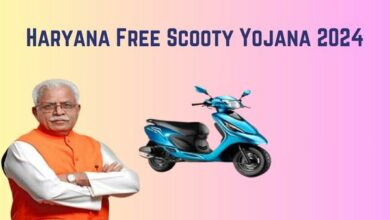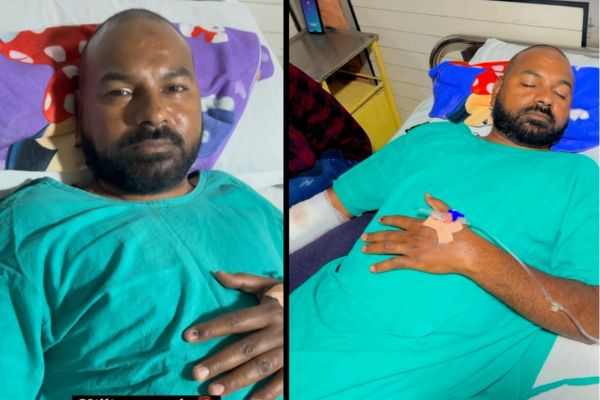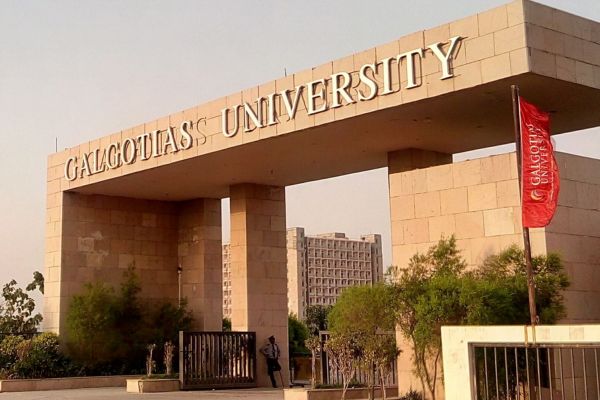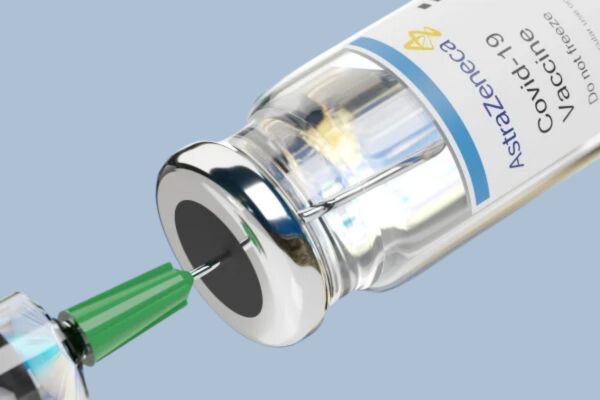Everybody agrees that we are living through unprecedented times. The nature and scale of the crisis that the Covid-19 pandemic has unfolded are unparalleled. In such a scenario, solutions are unlikely to come from past experiences or best practices. The biggest source of strength now is the partnerships we have built over the years.
The situation at hand calls for stakeholders to come together, work side by side, channelize efforts, and support each other. This, precisely, is what one of the Empowered Groups (EG) created by the Government of India for comprehensive action and integrated response to contain the pandemic, has been doing since it was formed in the end of March.
The mandate is to coordinate with three key groups of stakeholders: NGOs, private sector, and international development organisations, and help them in charting the best course of response action. The fight against Covid-19, since its start, needed as many hands as were available. The job was too big for the government to handle alone.
The strategy was to leverage vertical and horizontal partnerships: the vertical partnerships that the stakeholders have built within their organisations (for instance, multiple agencies in the UN system) and the horizontal partnerships which the government has institutionalised with the stakeholders (for example, NGO Darpan). The Empowered Group itself is a partnership, as its members are from eight different government ministries/organisations.
NGOs, given their deep connect with spatial and sectoral issues, were a natural partner in this endeavour. There is nobody better placed than the NGOs, to understand the pulse at the grassroots and engage closely with communities, especially in rural India. Around 92,000 organisations were urged to partner with district administrations and contribute to response efforts. Chief secretaries of all states were requested to engage the NGOs in relief and response efforts and designate state and district nodal officers to coordinate with NGOs. The approach was to leverage the strength and reach of the local NGOs in identifying priority areas for action and avoid duplicity of efforts.
The response from the NGOs was heart-warming. They have been actively setting up community kitchens, creating awareness about prevention, physical distancing and isolation, providing shelter to the homeless, daily wage workers, and urban poor, supporting government efforts in setting up health camps and in deputing volunteers and care givers to deliver services to the elderly, persons with disabilities, children, transgender persons, and others in vulnerable situations.
An outstanding contribution of NGOs was developing communication strategy in different vernaculars, which went a long way in taking awareness measures to the community level. Akshaya Patra, Rama Krishna Mission, Tata Trusts, Piramal Foundation, Bill and Melinda Gates Foundation, Action Aid, International Red Cross Society, Prayas, Help-age India, SEWA, Sulabh International, Charities Aid Foundation of India, Gaudia Math, Bachpan Bachao Andolan, the Salvation Army, and Catholic Bishops’ Conference of India were some of the partners which have embodied the whole-of-society approach in Covid-19 response management.
The crisis has brought out the best in the Indian start-up space. Many of them rose to the occasion and accelerated the development of low cost, scalable, and quick solutions. The results have been promising. AgVa accelerated the development of ventilators which are low-cost, mobile, low on power consumption and form factor, and require minimal training for operators.
Biodesign developed a robotic product called ResperAid, which enables mechanised use of manual ventilators. Kaaenaat developed highly portable ventilators which can be used to serve two patients simultaneously and has built-in battery, oxygen concentrator, and sterilizer cabinet. The products of a few non-ventilator start-ups too came to the aid of the COVID-19 fighting machinery.
The AI-enabled analysis of chest X-Rays developed by Qure.ai enables large-scale screening to identify potential COVID-19 positive cases. GIS and geo-fencing technologies by Dronamaps enabled information cluster strategies for hotspots. AI-powered online doctor consultation and telemedicine platform by Mfine connects diagnostics labs and pharmacies with doctors and patients.
The AI-enabled thermal imaging camera developed by Staqu facilitated large-scale screening at low cost. These developments strengthen the argument that low-cost and scalable innovative solutions designed and developed domestically must drive our country’s transformation. In an age when clouds of uncertainty hover over the vast and complex global supply chain networks, unleashing the innovative spirits of Indian entrepreneurs and creating sound domestic supply chain systems fit the bill.
The manner in which the stakeholders responded to the pandemic and the positive outcomes of their response reinforce the power of partnerships. In fact, they operated through partnerships. The NGO leaderships created momentum throughout their networks and delivered much-needed response. They also brought to the attention of the Group the problems from the grassroots. Multiple agencies of the international development organisations (for instance, WHO, UNICEF, UNDP and others from the UN system) designed and executed joint response initiatives, leveraging their presence across the country.
The coalitions which the industry organisations such as CII, FICCI, and NASSCOM have built over the years brought people and resources together, identified problems at multiple levels, channelized ideas and solutions, and facilitated innovations. The role played by the government has been facilitative in nature, which was based on the institutional and informal partnerships built with the three groups of stakeholders over the years.
Where do we stand today? Until three months ago, not a single N95 mask or PPE was manufactured in India. Today, we have 104 domestic firms making PPE and four manufacturing N95 masks. Over 2.6 lakh PPE and 2 lakh N95 masks are being manufactured in India, daily.
Domestic manufacturing of ventilators has strengthened manifold – orders for more than 59,000 units have been placed with nine manufacturers. While this shows the adaptiveness of Indian industry, the shift to domestic production must happen on a larger scale for a wider set of sectors in the long run, as envisioned by Make in India.
Civil society, and voluntary and non-governmental organisations constitute the backbone of collective articulation of citizen interest in a democracy. As facilitators, mediators, and advocators of this interest, they have put people before everything else during this pandemic crisis. Their resource limitations did not slow them down in reaching to those in the most vulnerable situations. The support provided by the NGOs to the government initiatives has been timely and invaluable, and their commitment unshaken.
They also have worked hand in hand with the private sector in implementing response initiatives. We are certain that the vertical and horizontal partnerships built over the decades and strengthened during the joint fight against the pandemic will deliver bigger results in times to come.
Disclaimer:Author is CEO, NITI Aayog. Views expressed are personal.
https://pubstack.nw18.com/pubsync/fallback/api/videos/recommended?source=n18english&channels=5d95e6c378c2f2492e2148a2&categories=5d95e6d7340a9e4981b2e10a&query=Amitabh,Kant,Writes:,The,Power,of,Collectivised,Solutions,in,Fighting,the,Coronavirus,Pandemic,coronavirus,Ficci,&publish_min=2021-05-20T21:05:01.000Z&publish_max=2021-05-22T21:05:01.000Z&sort_by=date-relevance&order_by=0&limit=2
(Note: This is a Article Automatically Generated Through Syndication, Here is The Original Source

 Haryana Free Scooty Yojana 2024: How to Apply Online?
Haryana Free Scooty Yojana 2024: How to Apply Online? Char Dham Yatra 2024 Starts: Online Registration, Routes, And Everything Important
Char Dham Yatra 2024 Starts: Online Registration, Routes, And Everything Important At UNGA, India Votes In Favor Of Palestine’s Bid To Become Full Member
At UNGA, India Votes In Favor Of Palestine’s Bid To Become Full Member Poonam Kasturi, Social Entrepreneur And Founder Of Daily Dump, Popularly Known As Compostwali, Dies At 61
Poonam Kasturi, Social Entrepreneur And Founder Of Daily Dump, Popularly Known As Compostwali, Dies At 61 Bhupendra Jogi Gets Attacked by Knives, Suffers Serious Injuries
Bhupendra Jogi Gets Attacked by Knives, Suffers Serious Injuries  Viral Video From Kanpur Shows Brutal Beating of Student Over Money Dispute, Arrested
Viral Video From Kanpur Shows Brutal Beating of Student Over Money Dispute, Arrested Galgotias University Students Protest Against ‘Urban Maxwell’ Triggered Meme Fest!
Galgotias University Students Protest Against ‘Urban Maxwell’ Triggered Meme Fest! AstraZeneca’s Covishield To Cause Rare Yet Serious Side Effects
AstraZeneca’s Covishield To Cause Rare Yet Serious Side Effects